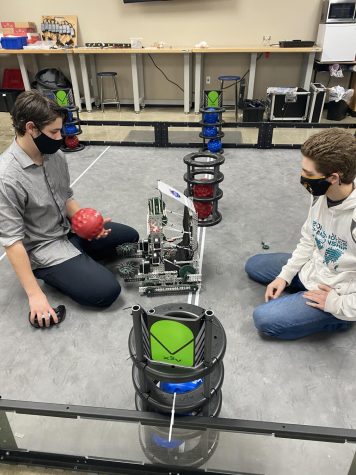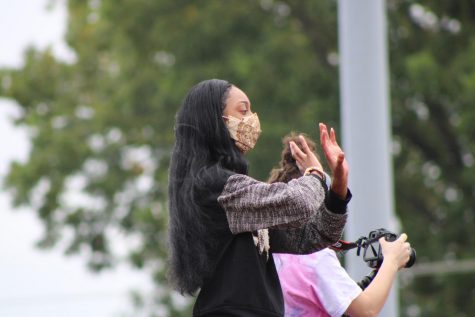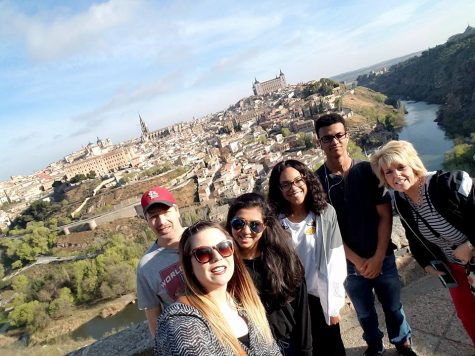NEA museums boast educational opportunities
January 8, 2023
Northeast Arkansas has a rich history. Initially inhabited by the Quapaw people and other descendants of the Mississippian culture, the region became the site of various French fur trading posts during the 16th century.
The region saw inhabitance by American settlers following the Louisiana Purchase and settling of Tennessee and Kentucky.
Northeast Arkansas gained prevalence during the transportation boom of the 1830s as roads and railways were built and steamboats became prevalent, highlighted by the Randolph County Heritage Museum in Pocahontas.
The museum hosts a variety of exhibits and archives regarding the county’s history, including a button factory that was once located on the shores of the Black River and put to use the river’s high concentration of mussels.
In addition to exhibits housed at the heritage museum, there are a myriad of nearby historic buildings in downtown Pocahontas.
The Randolph County Heritage Museum is open on Monday through Friday from 10 a.m. to 4 p.m., as well as on Saturday from 10 a.m. to 3 p.m.
Northeast Arkansas is host to a myriad of local museums, the largest and most influential of which is the University Museum located on Arkansas State University campus in Jonesboro.
Occupying the west wing of the Dean B. Ellis Library, the museum owns a large collection of archaeological and geological artifacts from the era of the Mississipian culture.
This museum also hosts a large array of exhibits ranging from early settlers of Northeast Arkansas to the region’s involvement in various wars of the past two centuries.
As an accredited member of the American Association of Museums, the ASU museum is often host to traveling and temporary exhibitions.
Recently, the museum expanded to include an exhibition on the history of Rockabilly music, complete with artifacts from artists in the genre and accounts by local artists.
The museum’s most iconic exhibition is that of a fossilized Mastodon skeleton, dated to around 10,000 years ago.
This museum is a part of local history, as it initially opened in 1933 and was one of the first museums in the South to become accredited by the AAM in the 1970s.
The ASU museum is open to the public with free admission every Tuesday through Saturday from 10 a.m. to 5 p.m. It is closed during university holidays.
In addition to the museum on campus, the ASU museum is also in charge of the maintenance of several Heritage Sites across eastern Arkansas, three of which are located in the northeast region.
The first of these to be designated, the Hemingway-Pfeiffer Museum, is located in Piggott.
The large house was the family home of Pauline Pfeiffer, wife of author Ernest Hemingway, during the 1930s.
On the property is a barn which was renovated into a studio for Hemingway, in which he wrote short stories and portions of his famous novel A Farewell to Arms.
The house and property have been renovated in recent years to reflect the history and culture of the 1930s, as well as the Pfeiffer family’s influence on the area.
The museum is open from 9 a.m. to 4 p.m. on Mondays through Saturdays.
A particularly influential site to the history of subsistence farming in Northeast Arkansas is the Southern Tenant Farmers Museum, located in downtown Tyronza.
The STFM details early 20th century farming in the region and the rise of the Southern Tenant Farmers Union in the 1930s, the first of such unions to be located in the south.
While the Union would eventually move its office to Memphis, the building in which it was originally located is influential to the town of Tyronza and the region as a whole.
As one of the first racially integrated unions in the South, the union was foundational in alleviating racial tensions in the area.
As a highly agrarian area, Northeast Arkansas was heavily affected by the farmers’ work movement.
Full of photographs, artifacts, letters and oral accounts, the STFM is an incredible resource for understanding the farmers’ work movement in Northeast Arkansas.
The museum is open from 9 a.m. to 3 p.m. on Thursdays through Saturdays.
Located nearby is the restoration of the Dyess colony, a farming community established in 1934 as a federal relief aid.
An attempt to alleviate the problems felt by subsistence farmers during the Great Depression, the colony was restored as a heritage site in 2010.
The colony was notably home to Johnny Cash, a famous country musician whose childhood home has been restored into a museum about his life.
Both the Cash Museum and the Dyess Visitors’ Center are offered as a collective tour, occurring every hour from 8 a.m. to 3 p.m. on Mondays through Saturdays.
In addition to modern settlers, this region had a large presence of Mississippian culture (800 to 1600 CE) era Native Americans.
Multiple archaeological sites have been designated in the area, most notably the Nodena site near Wilson and the Parkin Archaeological State Park near Parkin.
Most artifacts found at the Nodena site are now located in the Hampson Archaeological Museum in Wilson.
Both sites are home to a large number of mounds and artifacts indicating permanent or semi-permanent settlements were once located there.
The museums are home to a vast collection of artifacts from arrowheads to pottery, and share information about the pre-European settlement history of the region.
The Parkin site additionally hosts a one-room schoolhouse and remnants of a logging company that were located on its grounds in the 1920s, as well as information about Spanish explorers that likely visited in the 16th century.
The museums are excellent places to learn about the civilizations that once existed along the river deltas of Northeast Arkansas.
Both follow the same hours and are open from 8 a.m. to 5 p.m. on Wednesdays through Saturdays, as well as from 1 p.m. to 5 p.m. on Sundays.





